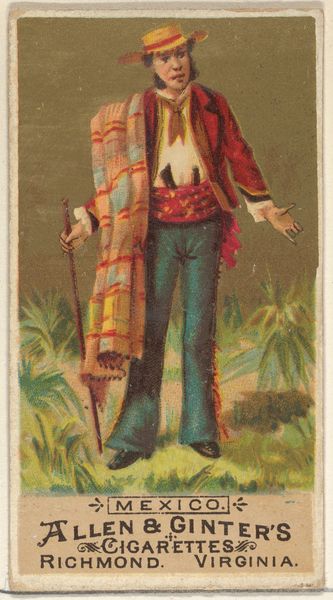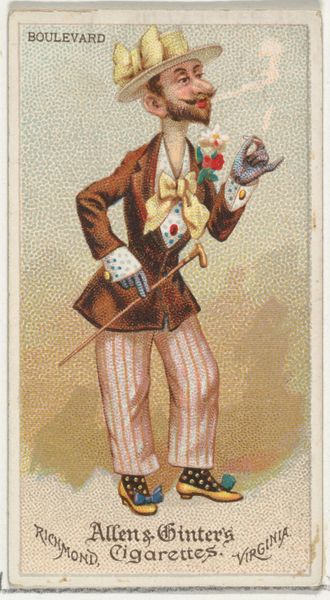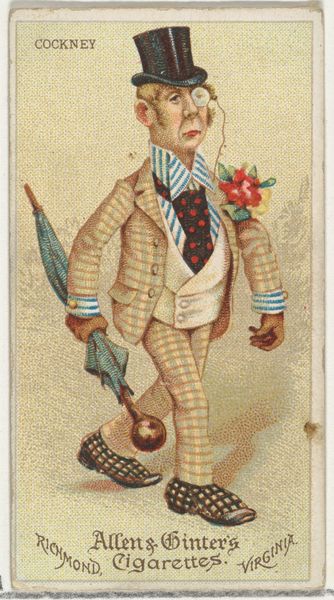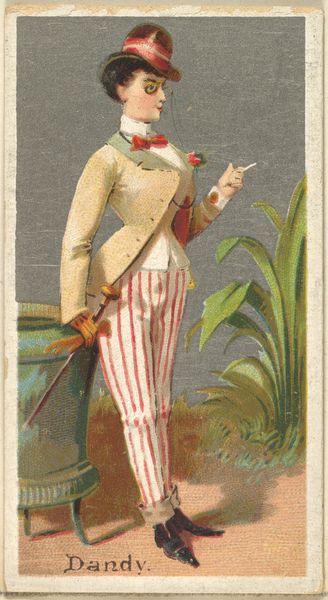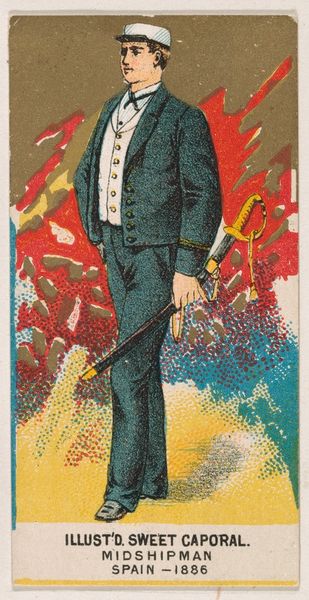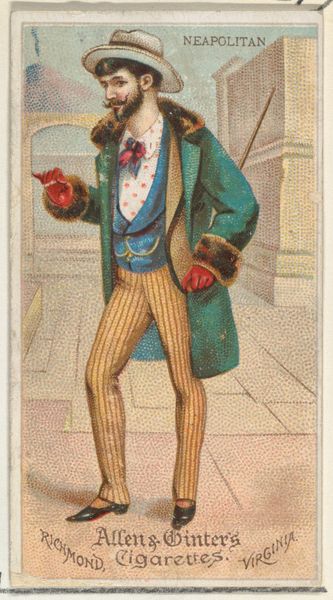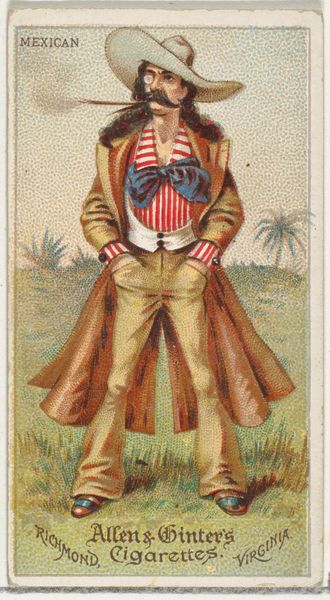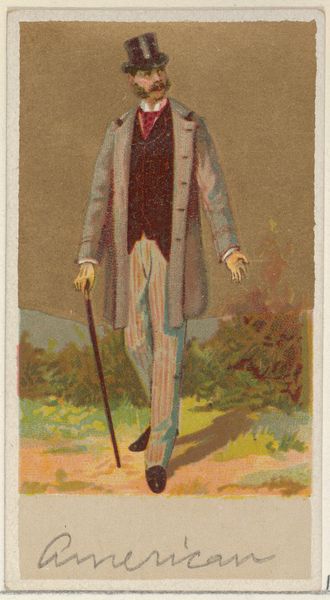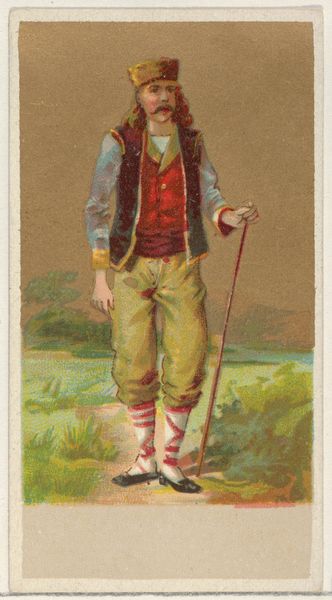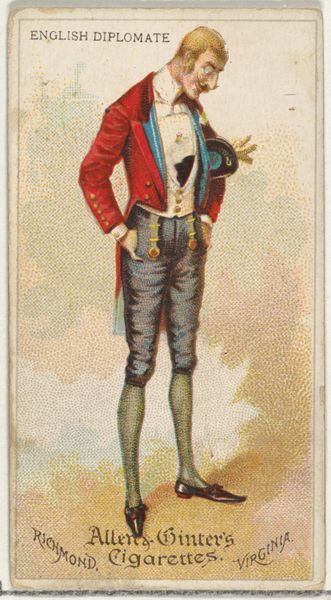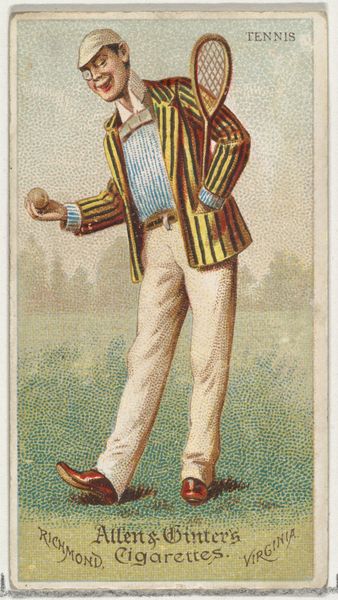
Planter, from World's Dudes series (N31) for Allen & Ginter Cigarettes 1888
0:00
0:00
drawing, coloured-pencil, print
#
portrait
#
drawing
#
coloured-pencil
# print
#
impressionism
#
caricature
#
caricature
#
coloured pencil
#
character illustration
#
genre-painting
#
watercolor
Dimensions: Sheet: 2 3/4 x 1 1/2 in. (7 x 3.8 cm)
Copyright: Public Domain
Curator: This colorful lithograph, dating from 1888, is called "Planter, from World's Dudes series (N31)," made for Allen & Ginter Cigarettes. It currently resides at the Metropolitan Museum of Art. It seems to combine drawing, colored pencil and watercolor in its execution. What's your first impression? Editor: What strikes me is its miniature scale combined with the rich detailing, all in service of commerce. It makes me think about how art is inextricable from the socio-economic conditions that produce and circulate it. Curator: Indeed. These cigarette cards often featured caricatures of public figures or romanticized images of labor. This "Planter," for instance, presents a satirical take on plantation owners, part of a broader historical context where the production of tobacco and sugar involved exploitative labor practices. How do you think this context impacts its meaning? Editor: It complicates it significantly. While seemingly harmless on the surface, this caricature repackages a system of exploitation for mass consumption. The artist likely focused on portraying a whimsical character, divorced from the actual labor on the land or, put more precisely, the social relations of production inherent in plantation economies. This, itself, becomes part of that machinery. Curator: Exactly. It’s fascinating to consider how the card, a physical artifact intended for widespread circulation, plays a role in shaping and reinforcing the existing societal power dynamics. Editor: Precisely. And look at the materiality – a mass-produced item designed for fleeting enjoyment but ironically preserving this image for over a century. It reminds us that even the most ephemeral objects can embody lasting social and economic structures. We must question why and for whom it was created in the first place. Curator: Considering this work in the broader context of its history allows us to see the intricate threads of exploitation, representation, and consumption. It serves as a constant reminder of the necessity to approach visual culture with an eye to material practices as well as an intersectional understanding. Editor: Yes. By digging into the details of its production and circulation, we get closer to comprehending the broader economic landscape within which the artwork existed – its real-world implications.
Comments
No comments
Be the first to comment and join the conversation on the ultimate creative platform.
